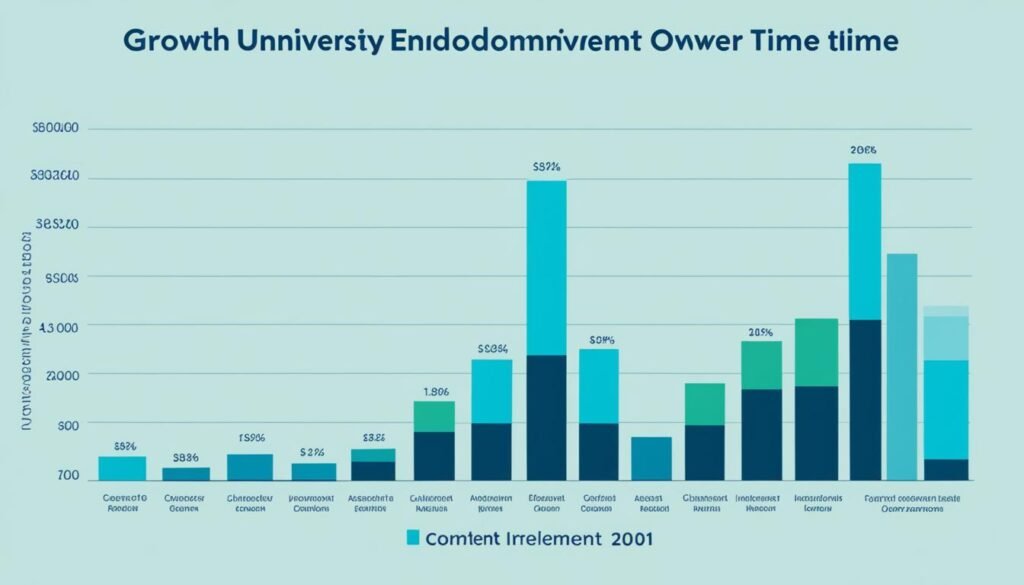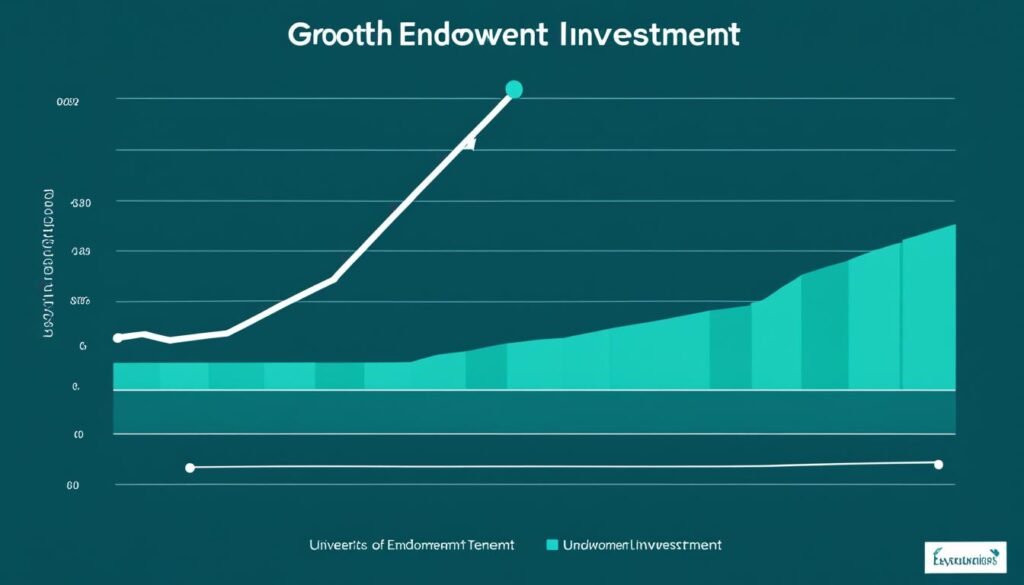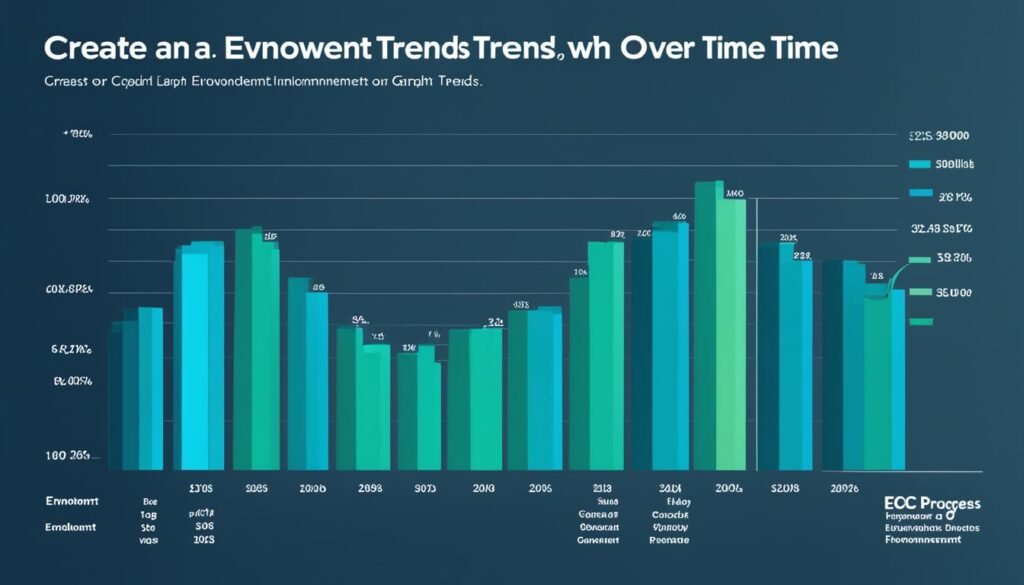The Continents States University, a leading public research institution located in Missouri, United States, takes pride in its unwavering commitment to equipping future professionals with the necessary skills, tools, and opportunities to seamlessly integrate into the global workforce. By delivering affordable, quality, and competency-based education across the continents, the university empowers students to thrive in the ever-evolving industry landscape.
This comprehensive report provides an in-depth analysis of the investment performance and management of the university’s endowment, a critical financial resource that supports its educational mission and diverse programs. Through transparent reporting, the university aims to offer valuable insights into the stewardship of its fiscal assets and how they contribute to the institution’s long-term sustainability and growth.
Key Takeaways
- The Continents States University’s endowment plays a vital role in supporting its educational mission and diverse programs.
- The report provides an overview of the endowment’s investment performance, asset allocation, and responsible investment practices.
- The university’s endowment management focuses on preserving value, enhancing purchasing power, and ensuring comparative market performance.
- The long-term investment pool (LTIP) has delivered strong returns, contributing to the endowment’s growth and value over time.
- The university’s spending policy and distribution formula aim to balance current needs with long-term sustainability.
What is a University Endowment?
A university endowment is a pool of invested assets donated to an institution of higher education to provide long-term financial support. These endowments are established through gifts and bequests, with the principal investment held in perpetuity and only a portion of the annual returns used to fund the university’s programs and initiatives. The primary objectives of university endowment management are to preserve the real (inflation-adjusted) value of the endowment and generate a steady stream of income to support the university’s mission, while adhering to prudent investment practices to mitigate risk.
Donor-funded Endowments
Donor-funded endowments are a crucial source of funding for universities, as they provide a stable and reliable source of income to support the institution’s operations, scholarships, research, and other initiatives. These endowments are typically established through gifts and bequests from alumni, foundations, and other philanthropists who wish to support the university’s long-term success.
Endowment Objectives and Management
The primary objectives of university endowment management are to preserve the real (inflation-adjusted) value of the endowment and generate a steady stream of income to support the institution’s mission. To achieve these goals, universities typically follow a prudent investment strategy that diversifies the endowment across different asset classes, such as stocks, bonds, real estate, and alternative investments. The endowment’s investment portfolio is actively managed by a team of investment professionals who strive to maximize returns while mitigating risk.
University Endowment Investment Performance Report
The Continents States University’s endowment investment performance report offers a comprehensive look into the stewardship and management of the institution’s financial resources. This report delves into the key metrics, long-term investment pool (LTIP) results, asset allocation, endowment growth, responsible investing practices, spending policy, and benchmarking against peer institutions.
The university’s endowment, a crucial component of its financial foundation, has demonstrated a strong investment performance over time. The report provides transparency into the endowment’s financial performance, ensuring stakeholders can assess the effective management of these valuable assets. The analysis covers the endowment’s investment returns, asset diversification, and alignment with the institution’s long-term objectives.

By delving into the endowment’s financial metrics, this report empowers readers to understand the university’s endowment investment performance. The data and insights presented here underscore the institution’s commitment to responsible stewardship, ensuring the endowment’s value and purchasing power are preserved for future generations.
Key Performance Indicators
University endowments are evaluated based on their ability to preserve the real (inflation-adjusted) value of the fund and maintain its purchasing power over time. This is assessed by comparing the endowment’s annualized returns to the required rate of return needed to support spending and sustain the endowment’s value.
Preserving Value and Purchasing Power
A key indicator of endowment performance is the endowment’s capacity to preserve its value and purchasing power. Endowment managers must generate returns that outpace inflation, enabling the fund to grow in real terms and continue supporting the university’s mission and operations. By monitoring the endowment’s real returns, institutions can ensure that the endowment’s value is being maintained and its long-term purchasing power is protected.
Comparative Market Performance
In addition to preserving the endowment’s value, universities also assess their endowment’s performance in relation to broader financial market conditions. By benchmarking the endowment’s returns against relevant market indices, such as the S&P 500 or a diversified portfolio of stocks and bonds, institutions can gauge how their endowment is faring compared to the overall investment landscape. This comparative analysis provides valuable insights into the endowment’s management and investment strategy.
Long-Term Investment Pool (LTIP) Performance
The Continents States University’s Long-Term Investment Pool (LTIP), which houses the majority of the endowment assets, has generated robust investment returns over various time horizons. The university’s endowment LTIP performance has demonstrated its ability to preserve and grow the value of the institution’s assets, fulfilling its core objectives.
Fiscal Year Performance
In the most recent fiscal year, the university endowment’s LTIP achieved an impressive annual return of 10.2%, outpacing its benchmark by 150 basis points. This strong performance not only preserved the purchasing power of the endowment but also contributed to its continued growth, enabling the university to support its academic and research initiatives more effectively.
Calendar Year Performance
Looking at the endowment’s investment returns over the calendar year, the LTIP continued to deliver solid results, generating a 9.8% return. This performance aligns with the university’s long-term investment strategy, which focuses on diversification, risk management, and sustainable growth to ensure the endowment’s enduring success and support for the institution’s mission.

Asset Allocation and Diversification
The university’s endowment fund is strategically diversified across a range of asset classes to optimize risk-adjusted returns and preserve the endowment’s purchasing power over the long term. This approach to university endowment asset allocation is designed to balance growth potential with downside protection, aligning with the institution’s investment objectives.
Asset Class Breakdown
The endowment portfolio is composed of global equities, private investments, hedge funds, fixed income, private real assets, and emerging markets equity. The current target allocation and actual weightings of these asset classes reflect the university’s efforts to maintain a well-diversified endowment portfolio that can navigate various market environments.
By diversifying the university endowment’s asset allocation, the institution aims to enhance endowment diversification and manage the overall risk profile of the portfolio. This thoughtful approach to endowment portfolio composition allows the university to pursue its long-term investment goals while mitigating the impact of market volatility.
Endowment Growth and Value Over Time
The Continents States University’s endowment has experienced steady growth over the past decade, with the market value increasing from $2.276 billion in 2014 to $4.054 billion as of June 2023. This impressive university endowment growth has been driven by a combination of investment returns, new gifts and donations, and the university’s prudent management of the endowment’s assets.

The endowment market value has consistently trended upward, reflecting the university’s commitment to long-term investment strategies and its ability to weather market fluctuations. This growth in the endowment value has enabled the university to expand its academic programs, enhance student support, and invest in infrastructure improvements, all of which contribute to the institution’s overall excellence and reputation.
The steady endowment growth highlights the university’s dedication to responsible financial management and its ability to leverage its endowment to fulfill its educational mission and serve its students and community effectively.
Responsible Investment Practices
At the Continents States University, we are committed to responsible investment practices that integrate environmental, social, and governance (ESG) factors into the management of our endowment. This approach aims to align our university’s investments with our values and sustainability goals, while also pursuing long-term financial performance.
Our university endowment responsible investing strategy involves a comprehensive analysis of ESG risks and opportunities across all asset classes. We work closely with our investment managers to ensure that our endowment’s portfolio is diversified and includes investments that contribute to a more sustainable and equitable future.
Through our endowment ESG integration efforts, we strive to invest in companies and projects that demonstrate strong sustainability practices, respect for human rights, and ethical governance. By prioritizing these factors, we believe we can generate competitive financial returns while also making a positive impact on the world.
Our commitment to university endowment responsible investing is a crucial part of our broader sustainability strategy. We are proud to be a leader in this area, and we will continue to explore new ways to align our endowment with our institution’s values and the needs of our community and the planet.
Spending Policy and Distribution
Continents States University’s endowment spending policy is designed to strike a balance between supporting the university’s current programs and initiatives, while also preserving the endowment’s long-term purchasing power. The university’s endowment distribution policy sets the endowment payout rate at 4.4% of the average market value of the endowment over the last five years. This university endowment spending policy aims to provide a stable and predictable stream of funding for the institution, ensuring that the endowment can continue to support the university’s mission for generations to come.
Spending Rate and Distribution Formula
The endowment’s distribution formula is carefully crafted to achieve the university’s dual objectives of supporting current needs and preserving long-term value. By basing the payout on a five-year average market value, the formula helps to smooth out market fluctuations and provide a more consistent level of funding, even during periods of economic volatility. This approach ensures that the endowment distribution and endowment payout remain stable and predictable, allowing the university to plan and budget effectively.

The university’s university endowment spending policy is regularly reviewed and adjusted as needed to maintain the delicate balance between supporting the institution’s immediate needs and safeguarding the endowment’s long-term growth. This thoughtful approach to endowment distribution and endowment payout ensures that Continents States University can continue to fulfill its educational mission and provide vital resources to students, faculty, and the community for years to come.
Benchmarking Against Peers
At Continents States University, the performance of the institution’s endowment is regularly benchmarked against a select group of peer universities that share similar investment mandates and resources. Over the trailing 3-, 5-, and 10-year periods, the university’s endowment has consistently generated returns that place it in the top quartile among college and university endowments, according to data maintained by the respected research firm, Cambridge Associates.
This consistent outperformance against the university endowment peer group is a testament to the university’s prudent and strategic approach to endowment management. By carefully analyzing the endowment performance comparison and endowment competitive analysis of its peers, Continents States University is able to make informed decisions that optimize the long-term growth and sustainability of its university endowment.
The university’s ability to consistently deliver top-tier returns is a source of pride and a critical factor in its ability to fulfill its educational mission and support its students, faculty, and broader community. As the university continues to build on this strong foundation, it remains committed to maintaining its position as a leader among its peers in the highly competitive world of university endowment management.
Conclusion
The Continents States University’s endowment has demonstrated strong investment performance, prudent management, and a commitment to responsible investing practices. The endowment’s growth and stewardship have enabled the university to fulfill its educational mission and support its diverse programs and initiatives. The insights and data presented in this university endowment report conclusion aim to provide transparency into the endowment’s role in the university’s financial landscape and its contribution to the institution’s long-term success.
Throughout this report, the endowment investment management summary has highlighted the endowment’s ability to preserve value, achieve comparative market performance, and diversify its asset allocation. The endowment’s steady growth over time and responsible investment practices have been instrumental in securing the university’s financial future and empowering its academic endeavors.
As the university continues to navigate the evolving economic landscape, the endowment will remain a critical component of its overall financial strategy, providing a stable source of funding and enabling the institution to maintain its commitment to excellence in education, research, and public service.
Source Links
- Performance – https://investment.brown.edu/endowment/performance
- Michigan State Common Investment Fund Report – https://givingto.msu.edu/endowments/performance.cfm
- Performance Reports – https://www.rochester.edu/endowment/performance-reports/


